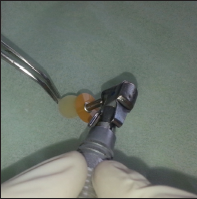The effect of immersion in beverages and dental bleaching agents on the surface roughness of resin composites
DOI:
https://doi.org/10.17532/jhsci.2022.1884Keywords:
Beverages, composite resins, profilometer, surface roughness, teeth whiteningAbstract
Introduction: Composite materials may be exposed to chemicals in food and beverages in the oral cavity, which can lead to changes in surface roughness. The aim of this in vitro study was to evaluate the surface roughness of two restorative materials after exposure to coffee and green tea followed by a dental bleaching procedure.
Methods: For nanofilled composite and microhybrid composite, 15 samples each were fabricated. Five specimens from each composite were stored in instant coffee and green tea for 4 h a day. After 30 days of immersion, specimens received dental at-home bleaching, using 16% carbamide peroxide (CP), for 7 h a day. The control group was stored in deionized water for 30 days. Surface roughness was determined by profilometry 24 h after polymerization, after 30 days of immersion, and after bleaching. The data were analyzed using a t-test for paired samples and mixed analysis of variance, at a 0.05 significance level.
Results: Neither beverages nor CP treatment significantly altered the surface roughness of the composites. There was no difference between the tested composite materials regarding roughness.
Conclusion: Surface roughness of the microhybrid and nanohybrid composites was not modified by coffee, green tea, and subsequent whitening treatment.
Downloads

Downloads
Published
License
Copyright (c) 2022 Samra Korać, Irmina Tahmiščija, Lajla Hasić-Branković, Elmedin Bajrić, Aida Džanković, Alma Konjhodžić, Almira Softić

This work is licensed under a Creative Commons Attribution 4.0 International License.










